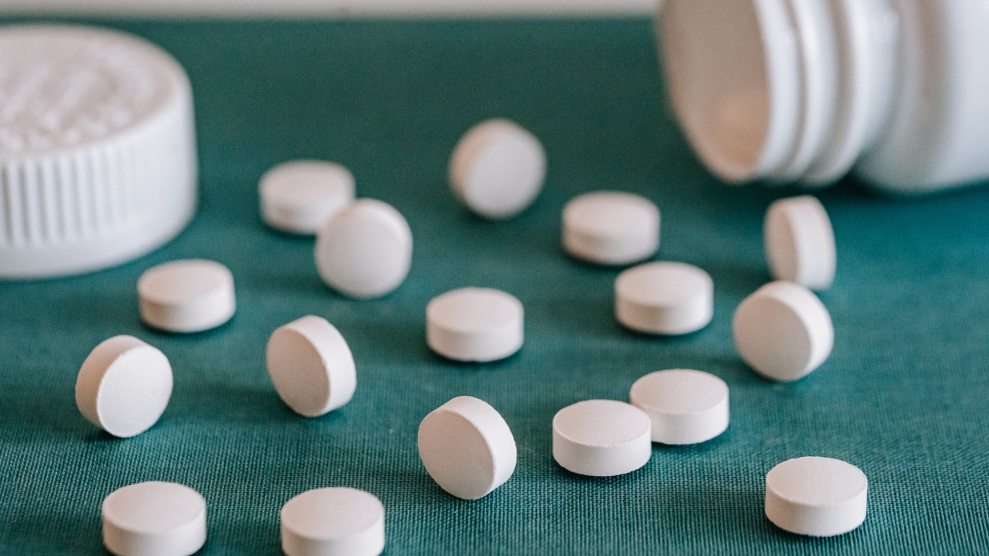
Alex Green/Pexels
For nearly a year, many people with ADHD and ADD in the United States have struggled to get the medication they’ve been prescribed to manage their condition. Those difficulties stem from a shortage that started with the stimulant Adderall and its generics, then trickled to methylphenidate and lisdexamfetamine, also known as Ritalin and Vyvanse. These drugs are also prescribed to help manage conditions like narcolepsy, traumatic brain injuries, and long Covid.
I’m one of those people who take methylphenidate to help manage a TBI. After being randomly punched in the head a few years ago by a stranger, I developed debilitating headaches and struggled to focus. The first day I took the stimulant was the first day after my TBI that I didn’t have a headache—turns out the amount of effort I had to put into focusing triggered headaches. With the shortages, like many others, I’m forced to ration my medication and take what feels like an unpaid part-time job to find my prescription.
While some pharmacies were already experiencing shortages by August 2022, the Food and Drug Administration officially announced a shortage in October. Several factors apply: Manufacturing delays have risen during the pandemic due to international supply chain issues, and, as a result, so have medication shortages. Since the pandemic began, more people are also being diagnosed with ADHD, although that’s not a new trend. For example, a JAMA Pediatrics report found that the prevalence of ADHD diagnoses among children and adolescents was about 6 percent in 1997-1998, but just over 10 percent in 2015-2016. Diagnostic criteria have evolved, according to the Centers for Disease Control and Prevention. This includes the recognition that this neurodivergent condition can present differently in girls and women.
But I’ve been thinking about how another issue may be contributing: The Drug Enforcement Administration’s role in setting production quotas for scheduled substances. Many ADHD drugs are listed on Schedule II—“high potential for abuse”—of the Controlled Substances Act. Cannabis, meanwhile, is a Schedule I drug with “no currently accepted medical use.” Basically, some of the scheduling is questionable.
Like most medications, stimulants can be misused. But some research shows that this risk is higher for people who use these drugs recreationally, not those prescribed them for medical reasons. As a 2016 study published in the Journal of Clinical Psychiatry suggests, people who used Adderall for non-medical reasons were much more likely to go to the emergency room for health concerns.
The DEA typically addresses quota issues at the end of the calendar year. I asked Jennifer Oliva, Indiana University law professor and Georgetown health law scholar, whether we’d still be in this mess if the DEA had addressed the shortages by raising its quotas in December. The DEA tends to be “as conservative as possible,” Oliva told me—drug busts are the agency’s focus, not whether people can secure their prescriptions.
Criticism of the DEA’s management of addressing controlled substance shortages is not new. A 2015 federal report called for the agency to do a better job coordinating with the FDA around controlled substance shortages. Even pharmaceutical company giant Teva, Oliva pointed out—the largest manufacturer of generic Adderall—has said the ongoing shortage is caused in part by DEA limits.
One reason why the DEA’s decisions are quite conservative: For “years and years,” according to Oliva, both the DEA and FDA had “finger-pointing at them around opioid overprescribing.” The DEA’s response to the opioid crisis also lacked a strong public health plan—the opioid clampdown left many patients by the wayside, some forced to stop cold turkey instead of safely tapering down on medication, risking withdrawal.
Out of desperation, people unable to get Adderall and similar stimulants may turn to counterfeit drugs, which can be extremely dangerous. A June study by University of California, Los Angeles researchers, for example, found that seven of 11 samples sold without prescription as “Adderall” in northern Mexico pharmacies contained methamphetamine.
Issues with the United States criminalizing substances, or making them hard to get, even predate the DEA. During Prohibition, Oliva noted, people turned to alcohol that sometimes even had poisonous additives or byproducts. “You went from a less potent substance to a much more potent substance that was easier to smuggle and conceal and much, more dangerous,” Oliva said. (The US government also “mandated adding poisons…to industrial alcohol so as to discourage people from drinking it,” as mentioned in an excerpt from the 2010 book The Poisoner’s Handbook).
From a public health perspective, Oliva sees the DEA’s approach to the ADHD medication shortage as the agency “just making another mistake”—one affecting many people’s quality of life.













